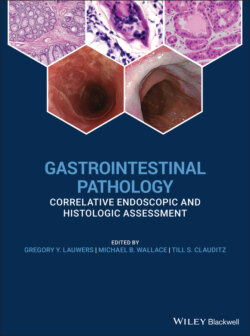Читать книгу Gastrointestinal Pathology - Группа авторов - Страница 31
Therapeutic Sampling
ОглавлениеAdenomatous polyps of the duodenum are handled in a similar manner to adenomatous lesions anywhere in the gastrointestinal tract. Endoscopic mucosa resection can be performed with injection followed by snare. There appears to be higher risks of bleeding and perforation associated with endoscopic resection of duodenal lesions. This is particularly true were using cap‐assisted devices where the thin wall of the duodenum is suctioned into the cap leading to inadvertent full‐thickness resection.
Special attention is required for resection of lesions involving the ampulla of Vater. In these cases, typically the lesion is resected followed by placement of a stent in the pancreatic and bile duct orifice to prevent stricturing of these and acute pancreatitis.
Another special situation is polypoid lesions in the distal small intestine, which can now be accessed with deep enteroscopy methods. Polyps are generally removed in the same manner as polypoid lesions elsewhere in the gastrointestinal tract by snare polypectomy. Special circumstances include numerous polyps such as those developed in patients with Peutz–Jeghers syndrome. These can be particularly large and numerous. It may not be possible to resect and retrieve all tissues. Because of the laborious process of deep enteroscopy, it is often not feasible to extract the endoscope with each large polypoid tissue. Thus diagnostic sampling can be performed by biopsy of the lesion or fragmentation of the lesion with a snare followed by complete therapeutic excision of the lesion.
